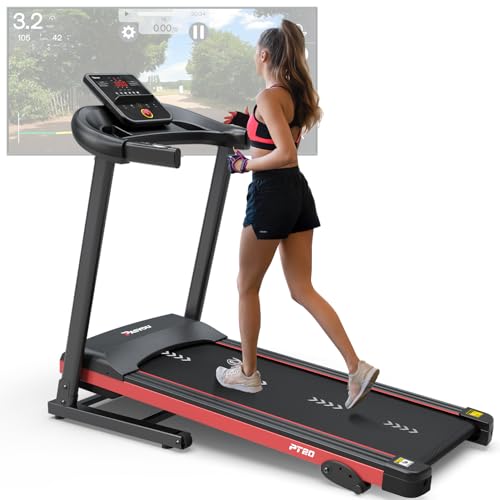15 Reasons To Not Overlook Manual Walking Pad
The Rise of Manual Walking Pads: A Comprehensive Guide
In today's hectic world, maintaining a healthy way of life can be a challenge. For many individuals, discovering the time to exercise can be a complicated job, leading to inactive practices. This is where manual walking pads emerge as a convenient service that permits users to stay active without jeopardizing their schedules. This blog post will look into the numerous elements of manual walking pads, their advantages, what to consider before acquiring one, and frequently asked questions to assist you make notified decisions.
What is a Manual Walking Pad?
A manual walking pad is a compact, non-motorized treadmill designed for walking, running, or light running. Unlike conventional treadmills that depend on electric motors for speed control and incline changes, manual walking pads are powered solely by the user's movement. They are generally lightweight, portable, and created for home or office usage, making them a perfect solution for hectic individuals aiming to integrate exercise into their daily regimens.
Advantages of Using a Manual Walking Pad
Affordable: Manual walking pads are normally more economical than their motorized counterparts.
Space-Saving: Their compact style suggests they can suit little spaces, making them ideal for homes and home offices.
Portable: Most models are lightweight and easy to transfer, permitting users to place them in various places.
No Electricity Required: Since these pads are manual, they do not need a source of power, conserving energy and eliminating issues about electrical threats.
Mild on Joints: Walking pads offer a low-impact workout, which is easier on your joints than running or high-impact workouts.
Customized Pace: Users can stroll at their own speed, making it easy to tailor the strength of their exercise according to their fitness level.
Secret Features to Look For
When shopping for a manual walking pad, consider the following features:
Feature
Description
Size
Make sure the dimensions fit your offered area and your requirements.
Weight
Lightweight designs are much easier to move and store.
Belt Width
A wider belt offers more space and stability for walking.
Max Weight Capacity
Examine the maximum user weight limit to ensure viability.
Safety Features
Search for functions such as emergency situation stop or security tether.
Adjustability
Some models might provide adjustable inclines to increase exercise intensity.
The Manual Walking Pad Market
As the need for home physical fitness services increases, so does the range of manual walking pads readily available in the market. Below is a comparison table of some of the popular brand names and their notable features:
Brand
Design
Dimensions (LxWxH)
Weight Capacity
Price Range
Brand A
Model 1
50” x 24” x 5”
250 pounds
₤ 150 – ₤ 200
Brand B
Model 2
55” x 25” x 6”
300 lbs
₤ 200 – ₤ 250
Brand name C
Model 3
48” x 20” x 5”
220 lbs
₤ 120 – ₤ 170
Brand name D
Model 4
60” x 26” x 7”
350 pounds
₤ 250 – ₤ 300
How to Maximize Your Walking Pad Experience
To get the most out of your manual walking pad, here are some ideas:
Set a Goal: Establish daily, weekly, and regular monthly fitness objectives to stay determined.
Integrate into Daily Routine: Use the pad while seeing television, throughout conferences, or while reading.
Mix Up Your Pace: Alternate in between quick and sluggish walking speeds to improve cardiovascular advantages.
Use Proper Posture: Stand high, engage your core, and keep your head up to avoid strain.
Stay Consistent: Aim for a minimum of 30 minutes of walking a day for optimal health advantages.
FAQ About Manual Walking Pads
1. Are manual walking pads appropriate for everyone?
Yes, manual walking pads can be ideal for many people, but individuals with specific health conditions should consult their health care provider before starting any brand-new workout regimen.
2. Just how much area do I need for a manual walking pad?
While the pad's portability enables simple storage, an area of about 6-10 square feet is generally recommended for comfortable use.
3. Can I run on a manual walking pad?
Many manual walking pads are developed for walking or light jogging. Running might be Walking Pad Non Electric but might strain the device or user if it's not built for high speeds.
4. How do I maintain my manual walking pad?
Keep the pad tidy and free of debris, and check for wear on the walking belt and frame. Frequently check it for any loose parts and tighten as required.
5. Can I use a manual walking pad while working?
Yes, numerous people use them while operating at a desk, permitting multi-tasking and promoting an active lifestyle at the very same time.
Manual walking pads provide an exceptional opportunity for people aiming to integrate physical activity into their day-to-day lives without overwhelming their schedules. With numerous models readily available, understanding their benefits, features, and factors to consider will help you in making an educated option. By embracing these compact fitness tools, users can perfectly integrate workout into their regimens, paving the method for healthier living.
